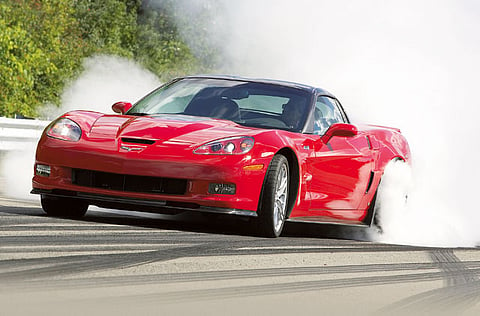Better with age: Chevrolet GM
1953 saw the birth of the Corvette, but nobody took it seriously because it wasn't a proper sportscar

Back in the day, General Motors was the biggest corporation in the world. It was making everything from home appliances to providing insurance but most notably, it was building Chevrolets, Pontiacs and Cadillacs. It was responsible for more than half of the cars on the roads in the US during its glory days. But, one thing was missing from the inventory — a sportscar.
Its chief designer Harley Earl wanted a sporty two-seater that could be bought for the same price as a mainstream saloon. With the help of designer Robert F McLean, he began working on a concept and on June 30, 1953, they came up with the goods and revealed the Corvette.
The C1 (first generation) was a gorgeous looking thing but that's about all it had going for it. You couldn't call it a sports car, even though it had an inline-six, but it wasn't in much of a hurry to get anywhere fast and was as nimble as a large ship. Just 300 polo white 1953 Corvettes were built at the Flint, Michigan plant.
Things were looking bleak as buyers were not interested until its performance could match its looks.
The year 1955 was an important one in the car's history, for it saw the introduction of the popular small-block V8. It transformed its fortunes and by the time the model had its first real facelift in 1956, customers were knocked out.
Another revamp in 1957 saw a chrome grille and rounder rump and it's the one people still regard as the best looking 'Vette ever made. When GM began racing it with a reworked cylinder head and a compression ratio increase to 10.3:1, the V8 was making 255bhp.
Horsepower grew steadily during the Sixties and it was truly fast — but you were risking your life if you drove one hard around a bend. Handling was a constant issue throughout the Sixties and Seventies but Chevy went some way in addressing the problem when the C4 rolled out in 1984.
Everything mechanical about it was better than anything before — even though it still used leaf springs at the back. For the first time, it had rack and pinion steering, oversized discs and the chassis was stiffened up. The Cross-Fire throttle body fuel injection V8 only made 205bhp — not bad considering the US had just come out of a huge oil crisis, which had wiped out the muscle car. The Corvette soldiered on and by the time the C5 debuted in 1997, it was producing a whopping 345bhp and 470Nm of torque. It had a top speed of 291kph but those figures pale in comparison to what the current C6 generation is capable of.
The 2005 model dropped the pop-up lights for exposed headlamps. They weren't seen on the car since 1962. Its shorter and narrower body was designed to appeal to the European market while a reworked suspension and massive 6.2-litre V8 propelled it from 0-100kph in 4.2 seconds with a horsepower rating of 400 giving it supercar status.
The ZR1, with its Eaton-supercharged 6.2-litre V8, produces an eye-watering 638bhp and heart-stopping 819Nm of torque.
With a top speed of 330kph, it's the most powerful engine to be put into a GM production sportscar.
Time line
C1
Referred to as the ‘solid-axle' models as independent suspension didn't arrive until the C2
C2
The second generation was inspired by the Jaguar E Type. The ‘Stingray' name was also introduced
C3
Similarities with the Mako Shark concept car were obvious and they sold in record numbers
C4
Due to engineering delays, a 1983 model Vette doesn't exist! 1984 saw the next big change
C5
Chevy used the Nissan 300ZX as a benchmark to help improve the build quality of the C5
C6
The current generation is the fastest and best handling sportscar to come out of the US.
FACTS
Manufacturer Chevrolet, GM
Also called Stingray from 1963-67 and 1969-76
Production 1953-present
Class Sportscar
Body style Two-door coupé, two-door convertible
Assembly Flint, Michigan, St Louis, Missouri, Bowling Green, Kentucky.
Sign up for the Daily Briefing
Get the latest news and updates straight to your inbox


